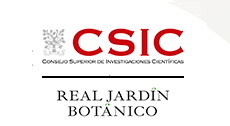Scientific Area
Abstract Detail
Nº613/2098 - Using Lonicera (Caprifoliaceae) as an evo-devo model clade to study floral and extrafloral fusion and shape.
Format: ORAL
Authors
Dianella Howarth1, Mansa Srivastav1,2, Michael Donoghue2, and Wendy Clement3
Affiliations
1 Department of Biological Sciences, St. John's University, New York, USA
2 Department of Ecology and Evolutionary Biology, Yale University, Connecticut, USA
3 Department of Biology, The College of New Jersey, New Jersey, USA
Abstract
Diversification in plant form commonly arises from changes in regulation of rates of tissue growth and location of tissue boundaries. Lonicera,with roughly 140 species, displays considerable variation and multiple independent transitions in floral symmetry; length of floral whorls; and fusion of petals, ovaries, extrafloral bracteoles, and leaves. We have used target enrichment to sequence twenty candidate genes and a microRNA (across most of the species) that are known to underlie these traits in core eudicots and/or angiosperms. In addition to genic coding sequence, we also targeted potential upstream and downstream regulatory regions to examine changes in transcription factor binding sites across the group that correlate with morphological shifts. Our key initial focus examined the role of CUC (CUPSHAPED COTYLEDON) in frequent shifts in fusion of leaves, bracteoles, and ovaries across Lonicera, with independent shifts recreating the same structures repeatedly. CUC is a NAC1a transcription factor that has been shown to affect organ boundaries in leaves and floral organs. We previously used genomic skimming and transcriptomic datasets to infer the phylogenetic history of CUC across Lonicera, and our findings suggest that there has been a duplication of CUC2 and a genomic loss of CUC3. This is the first known case of loss of CUC3 in any angiosperm group, and it is correlated with a marked increase in transitions in extrafloral fusion across the Caprifoliaceae. We further show that both CUC2 paralogs in Lonicera japonica and L. sempervirens are more highly expressed in corolla lobes than in the corolla tube, suggesting a function of CUC2 in separating tissues in Lonicera flowers. Using our target enrichment dataset, we discuss changes in the CUC2 binding elements that correlate with morphological shifts. We will further use this dataset to examine the larger gene regulatory network that includes CUC.




